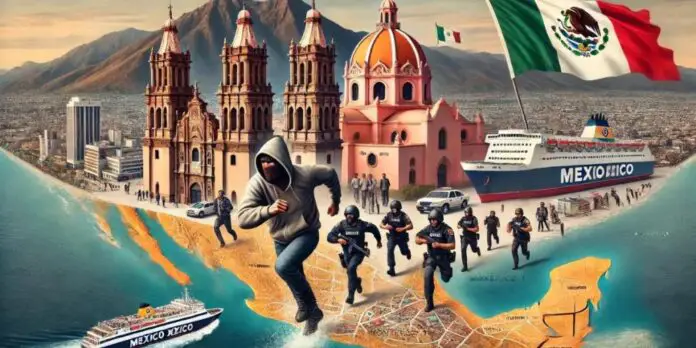Salvador “The Pirate of the Caribbean” acknowledges that his capture was not the result of a mistake in his movements, but rather a personal vendetta by a high-ranking police officer from Campeche. Salvador had been on the run across several states of the Republic before being captured in Campeche.
At the end of the 90s, Salvador, known as “The Pirate of the Caribbean,” planned and executed one of the most daring robberies in Mexican history, a heist on the ferry Mexico 1 in Quintana Roo that made him a legendary figure.
However, his life as a fugitive came to an end after a series of events that finally led to his arrest. Here’s how it happened.
In a recent interview conducted by Saskia Niño de Rivera on her podcast “Penitencia,” Salvador, known as “The Pirate of the Caribbean,” details this famous maritime robbery carried out on May 31, 1999, considered one of the most significant in the history of the Peninsula.
The Unexpected Arrest
The robbery of the ferry Mexico 1, carried out on May 31, 1999, put Mexican authorities on high alert. After the heist, Salvador and his team fled the scene, dispersing to different cities across the country.
The first rule Salvador imposed on his accomplices was clear: leave Cancun. While most followed this instruction, one participant decided to stay, which eventually led to the group’s downfall.
Salvador, along with most of his gang members, escaped to Mexico City. However, one of his accomplices returned to Cancun to meet his mother at the airport.
Despite initially leaving the city, he decided to return, which proved to be a fatal mistake. This individual, known as Juan Carlos, began boasting about his involvement in the heist while out with a woman he met at a nightclub.
The Slip-Up That Changed Everything
The woman to whom Juan Carlos confided his identity turned out to be the partner of a state judicial police officer. Informed about the criminal, the officer decided to take action. Juan Carlos was located on June 5, 1999, while leaving a hotel in Cancun with his mother.
Authorities arrested him as he was about to get into his car. During the search of his hotel room, they found evidence directly linking him to the robbery: clothing, communication radios, and cash.
Juan Carlos was taken to the judicial police cells, where he remained for several days before being handed over to federal authorities. In an effort to obtain more information, authorities subjected him to intensive interrogation, depriving him of sleep and using psychological pressure methods.
Fearing that his mother would be implicated in the case, Juan Carlos eventually gave in and revealed the identities of Salvador and other participants in the robbery.
The Capture of Salvador: End of a Flight
Meanwhile, Salvador continued his life as a fugitive. He knew that time was against him, and although he had opportunities to flee abroad, he decided not to do so to protect his family. For over a year, he moved through various cities in Mexico, evading authorities. However, his luck ran out on August 13, 2000, when he was arrested in Campeche.
Salvador narrated in the interview that his capture was not the result of a mistake in his movements, but rather a personal vendetta by a high-ranking police officer in Campeche, with whom he had had differences in the past. The man he mentions, then the director of public security, had allegedly ordered his subordinates to arrest him or even shoot him if necessary.
In his account, Salvador explains how, after a physical confrontation with police officers in the streets of Campeche, he was admitted to the Social Security Institute due to the injuries he sustained. Upon receiving the report of his admission, federal authorities took control of his detention. Finally, Salvador was transferred to the San Francisco prison on August 17, 2000, ending more than a year of life as a fugitive.
Salvador, also known as “The Pirate of the Caribbean,” does not evade his responsibility for the theft and acknowledges that his upbringing as a family child did not influence the decisions that led him to commit crimes, as he clarifies that he had parents who gave him education, affection, and love.
Source: Por Esto






